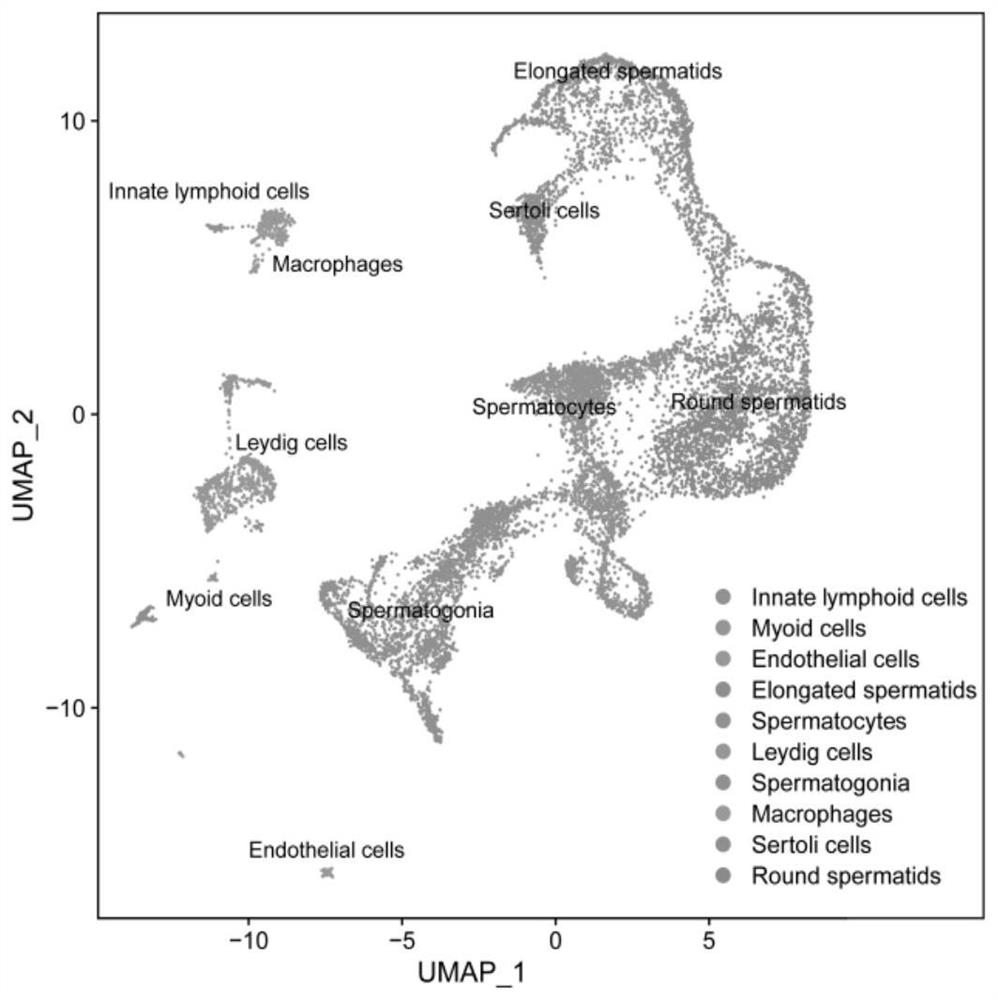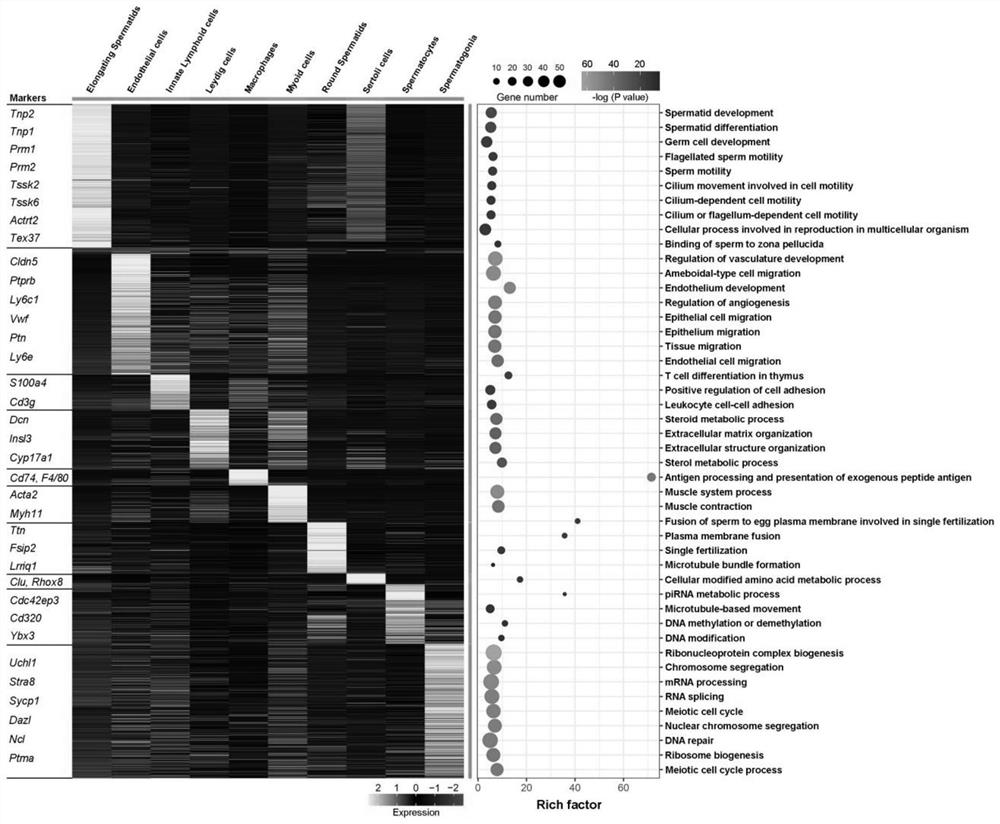Method for sorting macrophages in testis
A technology of macrophages and testis, which is applied in the field of sorting macrophages in the testis, can solve the problems of weak tissue specificity, and achieve strong testis specificity, accurate and efficient separation effect
- Summary
- Abstract
- Description
- Claims
- Application Information
AI Technical Summary
Problems solved by technology
Method used
Image
Examples
Embodiment 1
[0036] The present embodiment provides a sorting method for macrophages in the testis, and adopts this method to sort the macrophages in the testes of 3-month-old (3M) and 21-month-old (21M) mice respectively, and the specific experimental methods are as follows:
[0037] (1) Obtaining testicular tissue pulp: the mice were killed by cervical dislocation, the excess fat was removed by abdominal dissection, and the testicular tissue was removed; after the testicular tunica was removed, an appropriate amount of PBS was added, and the testicular tissue was cut into paste with micro scissors to obtain testicular tissue pulp;
[0038] (2) Obtain testicular tissue cells: Add 1 mL of type IV collagenase with a concentration of 1 mg / mL to each mouse’s bilateral testes, digest in a water bath at 37°C for 15 minutes, and blow it once for about 7 minutes until it becomes cotton-wool; then add 6 mL of ice-cold PBS to stop digestion , after being filtered through a 70 μm sieve, the cell sus...
Embodiment 2
[0042] In this embodiment, the 3-month-old (3M) and 21-month-old (21M) mouse testicular tissue cells extracted in Example 1 were subjected to cell sequencing, and the distribution of cells in the testis of mice of different ages, the overall cell grouping and the number of cells in the testis were observed. Expression of macrophage markers in testicular cells. Experimental results such as Figure 1 ~ Figure 4 shown. Depend on figure 1 It can be seen that 7524 testicular cells were captured in the 3M group, and 3597 testicular cells were captured in the 21M group. There was no significant change in the ratio of cell numbers between the two. Depend on figure 2It can be seen that after removing the haploid, the main cell groups in the testes of the 3M group and the 21M group include innate lymphocytes, peritubercular myoid cells, endothelial cells, Leydig cells, macrophages, spermatogonia, and spermatocytes , elongated sperm, round sperm and Sertoli cells. In addition, the...
Embodiment 3
[0044] In this example, the 3-month-old (3M) and 21-month-old (21M) mouse testicular macrophages extracted in Example 1 were sequenced to observe the expression of CD74 and various protein markers in mouse macrophages of different ages . Experimental results such as Figure 5 ~ Figure 7 shown. Depend on Figure 5 ~ Figure 7 It can be seen that the expression level of CD74 in the testicular macrophages of 3-month-old (3M) and 21-month-old (21M) mice is higher than that of other proteins.
PUM
 Login to View More
Login to View More Abstract
Description
Claims
Application Information
 Login to View More
Login to View More - R&D
- Intellectual Property
- Life Sciences
- Materials
- Tech Scout
- Unparalleled Data Quality
- Higher Quality Content
- 60% Fewer Hallucinations
Browse by: Latest US Patents, China's latest patents, Technical Efficacy Thesaurus, Application Domain, Technology Topic, Popular Technical Reports.
© 2025 PatSnap. All rights reserved.Legal|Privacy policy|Modern Slavery Act Transparency Statement|Sitemap|About US| Contact US: help@patsnap.com



